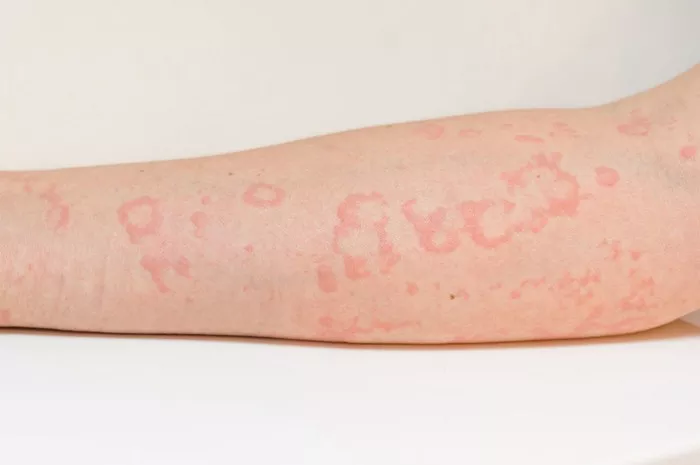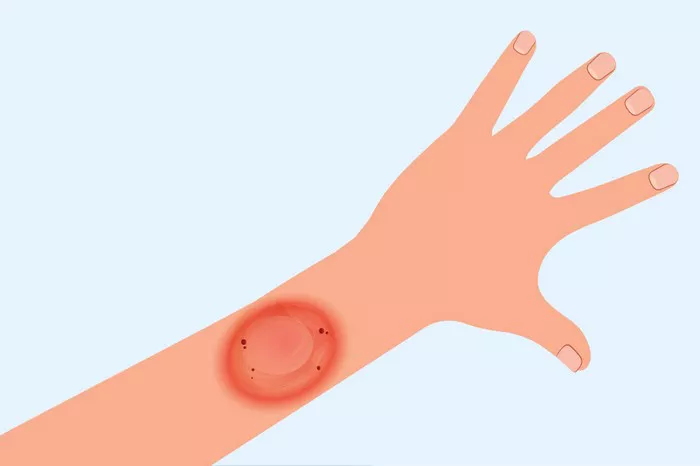Since its emergence in late 2019, the novel coronavirus, also known as SARS-CoV-2, has significantly impacted global health and everyday life. The virus primarily manifests as a respiratory illness, leading to symptoms ranging from mild flu-like symptoms to severe pneumonia and respiratory failure. However, as our understanding of COVID-19 continues to evolve, researchers and healthcare professionals have observed a myriad of unusual symptoms and complications associated with the virus. Among these is the potential link between COVID-19 and cold urticaria, a condition characterized by the development of hives or welts in response to cold temperatures.
Understanding Cold Urticaria:
Before delving into the potential association between COVID-19 and cold urticaria, it is essential to grasp the fundamentals of this condition. Cold urticaria is a type of physical urticaria, which refers to hives triggered by physical stimuli such as pressure, friction, heat, or cold. Individuals with cold urticaria typically experience localized hives, itching, and swelling upon exposure to cold temperatures, such as cold weather or contact with cold objects or liquids. In severe cases, systemic reactions may occur, leading to symptoms such as dizziness, difficulty breathing, and even anaphylaxis.
Exploring the Connection with COVID-19:
The relationship between COVID-19 and cold urticaria has garnered attention due to reports of individuals developing hives or worsening of existing cold urticaria symptoms after contracting the virus. While research on this topic is still in its infancy, several factors suggest a potential link between COVID-19 and cold-induced hives.
Firstly, COVID-19 is known to induce an inflammatory response in the body, which can lead to various dermatological manifestations, including rashes and hives. The immune system’s reaction to the virus may trigger an overproduction of histamine, a key mediator involved in the development of urticaria, thereby exacerbating or unmasking cold urticaria in susceptible individuals.
Furthermore, COVID-19 can affect vascular function and blood circulation, potentially influencing the body’s response to cold temperatures. Disruption of the vascular system may exacerbate cold-induced hives by altering the skin’s reactivity to cold stimuli or impairing the body’s ability to regulate temperature effectively.
Additionally, certain medications used in the management of COVID-19, such as antiviral drugs or corticosteroids, may also contribute to the development or exacerbation of cold urticaria as a side effect. These medications can modulate immune function and alter the body’s response to external stimuli, including cold temperatures.
Clinical Observations and Case Studies:
While scientific literature on the association between COVID-19 and cold urticaria remains limited, anecdotal evidence and case reports provide insight into this phenomenon. Several documented cases describe individuals experiencing cold-induced hives either during the acute phase of COVID-19 infection or in the aftermath of recovery.
For instance, a case study published in a dermatology journal documented the onset of cold urticaria in a previously healthy individual following a bout of COVID-19. The patient reported developing hives and intense itching upon exposure to cold temperatures, which resolved upon rewarming. Similarly, healthcare providers have reported observing an increase in patients presenting with cold urticaria symptoms coinciding with COVID-19 outbreaks in their communities.
Furthermore, researchers have noted a potential association between COVID-19 vaccination and the development of cold urticaria-like reactions. While the mechanism underlying this phenomenon remains unclear, it underscores the need for further investigation into the interplay between viral infections, immune responses, and dermatological manifestations.
Challenges and Considerations:
Despite growing interest in the link between COVID-19 and cold urticaria, several challenges hinder our understanding of this relationship. Firstly, the lack of large-scale epidemiological studies makes it difficult to determine the prevalence and incidence of cold-induced hives in individuals with COVID-19 accurately. Additionally, the heterogeneity of COVID-19 presentations and the variability of cold urticaria symptoms pose challenges in establishing a definitive causal relationship between the two conditions.
Furthermore, the diagnosis of cold urticaria can be challenging, as it requires specialized testing, such as cold stimulation tests, to confirm the condition accurately. In the context of COVID-19, healthcare resources may be strained, making it challenging to conduct comprehensive diagnostic evaluations for dermatological conditions.
Conclusion:
In conclusion, the potential link between COVID-19 and cold urticaria warrants further investigation to elucidate the underlying mechanisms and clinical implications of this association. While anecdotal evidence and case reports suggest a possible relationship, larger-scale studies are needed to confirm and characterize the prevalence, risk factors, and outcomes of cold-induced hives in individuals with COVID-19. Healthcare providers should remain vigilant for dermatological manifestations, including cold urticaria, in patients with COVID-19, and consider appropriate diagnostic and management strategies. Ultimately, advancing our understanding of this relationship will enhance patient care and inform public health strategies aimed at mitigating the impact of COVID-19 on dermatological health.
Related topics:


























